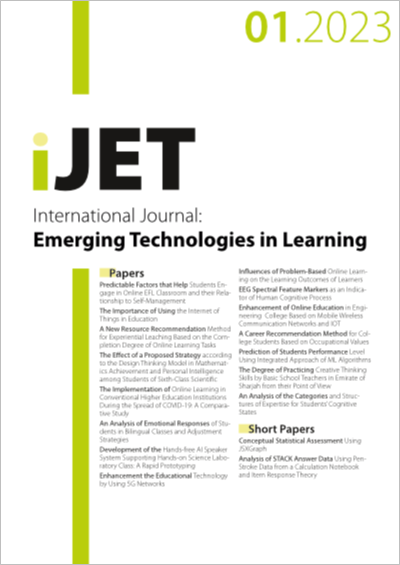EEG Spectral Feature Markers as an Indicator of Human Cognitive Process
DOI:
https://doi.org/10.3991/ijet.v18i01.31259Keywords:
cognition, education, music, neuroscience, power of EEG frequencyAbstract
Information technologies allow using modern and timely effective analyses of EEG waves and the methods of data processing that allows effective usage of this method into pedagogically and psychologically oriented researches. Aim of this study was to develop and validate method of EEG signal spectral properties usage in the investigations of the process of cognition in the process of the perception of music by the choice of professional studies. 23 research participants took part in the research – the students of the University of Latvia, the division of participants "non-musician" and "musician". The EEG recording synchronized with the musical signal using the generated synchronization signal that given to one of the unipolar input channels of the EEG equipment. The research analyses the basic rhythm of EEG the changes of the maximum frequency and the wave frequency power in the processes connected with the perception and cognition of music for 15 seconds long intervals. During the time of listening to the chorus songs, the range frequency of the range rhythm of alpha and beta does not change to the musicians but during the time of listening to the instrumental music it increases but it was more vivid in the range of beta frequency. Non-musicians reacted differently - while listening to chorus songs and instrumental music the frequency of alfa waves of EEG increased, but the beta wave frequency decreased. EEG as a method of investigation is recommended for pedagogical research to evaluate the neurological functions in the cognitive processes.
Downloads
Published
How to Cite
Issue
Section
License
Copyright (c) 2022 Juris Porozovs, Viktors Veliks, Aija Kļaviņa, Gunita Praulīte

This work is licensed under a Creative Commons Attribution 4.0 International License.



